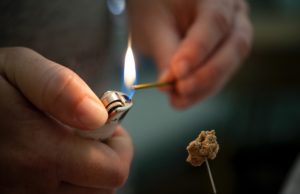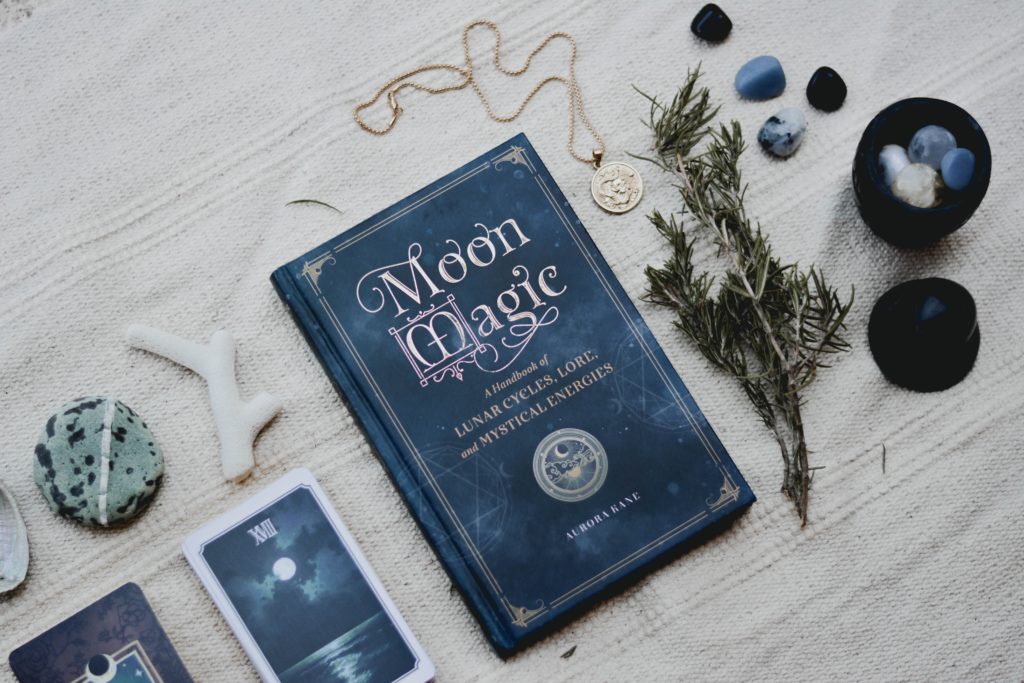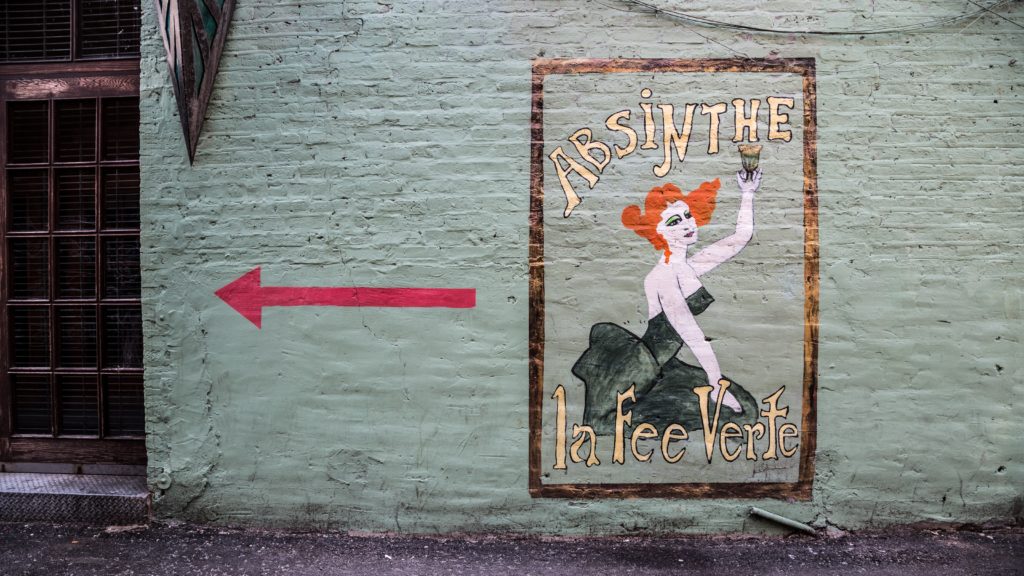The herb Mugwort has been a familiar name to me for several decades now. In the early 2000s, my (geeky) online reading into Daoism gave a first glimpse of its use in the form of Moxa. Moxa is a cone or stick made from aged, ground mugwort leaves, which is burned on/near acupressure points on the body (with or without needles), to help treat “cold,” “damp,” and “deficient” conditions. It’s actually been used in this way for thousands of years—and is even mentioned in a classic text of Traditional Chinese Medicine (or TCM) dating back to around 500 BCE by a Moxibustion expert of the day, as a way to bring new energy into the body.

In fact, as I’ve since discovered, Mugwort wasn’t only valued for its medicinal and energetic properties in Asia. It has long been esteemed as a valuable herb in America and Europe for thousands of years, as well.
Known as “the herb of St. John the Baptist” in Europe, according to Discovering the folklore of plants by Margaret Baker, Mugwort’s traditional uses and folkloric fame include its reputation for being “a source of power,” protecting against “thunderstorms and witchcraft,” and counteracting fatigue. It would also be put under the pillow of a sick person—if they slept it was said that they would recover, but if their night was sleepless, their prognosis wasn’t so sunny the following morning! Among plethora of traditional uses, Mugwort also has the ability to stimulate changes in the gut, and has been used as an herbal remedy to treat parasites and digestive conditions. Still (surprisingly enough), as valued as it has been around the world for millennia, Mugwort is now often treated as an annoying weed due to its prolific growth and propensity to spread.
Mugwort’s Latin name Artemisia Vulgaris might ring bells if you’ve ever read up on absinthe. This is because Mugwort is closely related to Artemisia Absinthium—the type of wormwood which is used in the production of “la fée verte,” that semi-mythological tipple popular between the mid-19th and early 20th centuries among the creative communities of Paris: absinthe!
As it happens, the psychotropic compound within wormwood (thujone) is also found in mugwort. It’s worth noting that consuming too much thujone can be toxic, and that being a member of the daisy family Asteraceae (whose other members include chamomile) it’s possible to have an allergic reaction to mugwort. So if you have a known allergy to chamomile or any of its relatives, it’s wise to steer clear of mugwort. Also, if you’re pregnant or trying to get pregnant, mugwort is definitely to be avoided.
Another side to the history and uses of this herb, is Mugwort’s strong association with the feminine, as its properties also include stimulating menstruation, and even bringing about miscarriage and abortion—something it had been used for before abortion clinics existed.
An alternative name for mugwort is “cronewort” or elder (as in senior, rather than the plant called “elder”) plant, as she reputedly offers wisdom and teaching to those who use her. In fact, the “Artemisia” in its name refers to the goddess Artemis, Apollo’s twin sister, who was the goddess of (among other things) childbirth and chastity. In fact, Diana (the Roman equivalent to Artemis) also took on a connection with the moon (Luna rather than the Greek Selene), and even Hecate—Ancient Greece’s chief goddess of magic and spells (associated with the underworld). In some present day Wiccan’s lore, the maiden, mother, and crone archetypes (representing the cycle of the year, the month and of the moon) are embodied in Artemis/Diana as mother, Selene as maiden, and Hecate as crone.

But while I digress, this mini-fugue isn’t altogether irrelevant to mugwort, since it’s nowadays seen as a symbol of the Divine Feminine, an early tool of female empowerment and control over their own reproductive systems. It also has magical (going back to Anglo-Saxon times) and spiritual uses. Sleeping with a sprig or so under your pillow is said to provoke vivid dreams, and smoking it or drinking a tea made from mugwort is said to have a mildly hallucinogenic effect. Not only that, but also as previously mentioned, it’s easy to grow in all kinds of terrain, and prolific enough to be viewed as a weed!
So when my partner’s parents started passing us some leftover ingredients from their monthly Forage Box subscription, it’s fair to say that I was more than a little intrigued when I spied a little package of mugwort a month or two ago! Like a good student of herbalism, I started by trying it out for myself in small quantities. As the advice on its packet was to use it as a “wild replacement for sage,” I crumbled the dried leaves from a couple of stalks into a soya mince tomato and mushroom bolognese, which my partner (whom I’d forewarned about its reputation) and I then had for dinner. I noticed the flavor had a pleasant gentle bitterness—definitely an indicator of its digestive properties. I also noticed that I immediately started to feel a pleasant, slightly foggy, relaxed, uplifted effect—a bit like hard edges had been taken off the world around me. I felt… merrier, and the barriers between my conscious and subconscious felt a lot more thin. Ideas, images, words were making themselves known to me—not in a scary hallucinatory way, I might add. I just felt like I was very much in my creative flow, possibly dreaming while awake, and as though I had no filter.
I’ll come clean—in my early 20s, I went through a phase of being something of an absinthe aficionado. It was legal in the U.K. (not in France at that time), and while not exactly straightforward to procure, it was by no means impossible to find a specialist drinks shop who would ship me my order. While I had been looking forward to experiencing some of creative trippy effects I’d read about, I have to say the effect of the thujone was never as powerful as I’d imagined, or been led to believe by the reviews online. In fact the psychotropic qualities were definitely overshadowed by the alcohol’s strength, disappointingly. And this includes Sebor absinthe—the one which contained the highest levels of wormwood (and therefore thujone) allowed by law at that time.

Well then—with that youthful experience to draw on, I can say that while the thujone levels in absinthe may have been higher than those in mugwort, the effects of consuming mugwort as a culinary herb felt far more noticeable, immediate and vivid, for me than I had ever experienced with absinthe. I do acknowledge that this could be due to several factors, such as my age (this was around 20 years ago, after all), prescription medication, and lifestyle differences. But although my partner didn’t get the same kind of immediate waking effects, he did report very vivid lucid/meta dreams the night after our mugwort bolognese. It must be said that my dreams that night were also incredibly vivid, significant, and spiritual/energetic, as well.

The initial effects felt to me as though my spiritual and energetic senses were made sharper than usual, after eating just a sprig or two of this common herb. In fact they felt sharper and more present than the standard five senses of the body. It seemed as though I was more “open” to different qualities of energy, with my intuition and awareness being hyper-charged. It’s hard to describe accurately, and I am conscious that I am probably (OK, definitely) sounding like an aging hippy here—so I won’t wax too lyrical around the specifics in this article. Suffice it to say that I do consider this to have been a positive experience, and that mugwort is a herb I’ll continue to turn to when I’m looking for life directional answers/wisdom and guidance or creative inspiration, and at important times of the year or lunar cycle (full moons, equinoxes, solstices, menstruation, etc.). It does tend to affect my focus and my perception of time—albeit in a fairly mild way—so I wouldn’t advise consuming Mugwort before a meeting, or before doing that last draft of a project.
However, when I’m in a more yin state of being (or am willing to be) and able to listen to and engage openly with what this awesome herb has to teach me—well for me, that is the perfect time for Mugwort.
Get more like this—Sign up for our daily inspirational newsletter for exclusive content!
__
Photo: Katherine Hanlon via Unsplash; Content Pixie via Unsplash; Timon Studler via Unsplash; Christopher Campbell via Unsplash




